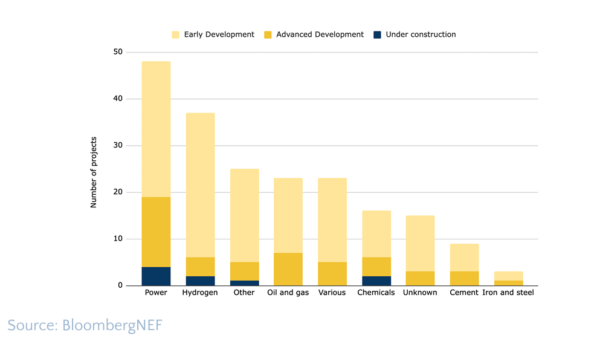The Japanese government is aiming to become “carbon neutral” by 2050 by achieving net zero greenhouse gas emissions. To reach this goal, it is actively promoting carbon dioxide capture and storage (CCS) as a key technology, which captures and stores carbon dioxide underground. However, many have questioned the effectiveness and economic feasibility of CCS. Here we summarize a briefing on CCS technology and its CO2 emission reduction potential by Zero Carbon Analytics, an international research group that analyzes issues related to climate change and energy transition.
The Zero Carbon Analytics briefing “Carbon capture and storage: Where are we at?” points out that the history of CCS projects is characterized by failure, and emphasizes that, although there is currently unprecedented investment in CCS projects planned for use in the power sector, the technology is expected to be very costly, with little potential to mitigate CO2 emissions.
The briefing reveals that, out of over 260 CCS projects from between 1995-2018, only 27 were ever completed, and of the 8.5 billion USD invested globally in CCS after 2009, only 30% was ever used as projects failed to get off the ground.
Currently, the largest pipeline of CCS projects is for the generation of electricity, with 48 projects planned or under construction. However, the briefing points out that, in addition to power sector CCS projects historically being viewed as failures (66% of all canceled CCS projects so far have been in the power sector), the feasibility of future CCS projects in the power sector is also extremely low. This is due to two major reasons: the high current and projected costs, and the increasing competitiveness of renewable energy.
Fig: CCS pipeline by Sector

It is emphasized that even without CCS, onshore wind and solar are 40% cheaper than adding new gas or coal capacity. This gap grows even wider when CCS is added, due to the cost of building and maintaining CCS infrastructure, the additional energy costs of operating CCS-enabled facilities, and the costs associated with capturing, transporting and storing or using carbon. Economically, the potential for CCS in the power sector is exceedingly low, meaning that a number of projects in the development pipeline will likely not be completed, and those that are will be priced out of the market due to the increasing competitiveness of renewables.
The briefing also concludes that, looking at existing CCS’s low carbon capture capacity along with the very small likelihood of future projects coming to fruition, CCS also has very little potential to contribute to reducing carbon emissions from power generation. Moreover, CCS facilities do not capture all carbon emissions; many facilities only capture 65% of emissions at startup, which steadily increases to 90% over years of operation, with costs increasing exponentially the more carbon is captured. There is also still much concern and uncertainty regarding CO2 leakage from transportation and storage sites, which will also lower CCS’s effectiveness in reducing carbon emissions.
Furthermore, it is pointed out that utilizing the captured carbon through carbon capture utilization and storage (CCUS) technology may even result in a net increase of CO2 emissions. One reason for this is the significant amount of energy required for the various processes involved in utilizing captured carbon, which would be increasingly difficult to fulfill using only renewable energy sources as CCUS is scaled up.
Additionally, currently most operational CCUS facilities are connected to natural gas processing facilities, and around 74% either entirely or partially depend on “enhanced oil recovery” (EOR) for revenue. EOR is a process of injecting CO2 into oil wells to extract as much oil as possible, and the CO2 released by burning the recovered oil and gas more than offsets the CO2 stored, resulting in even more carbon emissions.
Despite CCS’s high costs and low potential to reduce emissions, Japan’s decarbonization plans include investing heavily in CCS technology with high hopes while continuing to burn fossil fuels. This briefing emphasizes that phasing out fossil fuels and transitioning to renewables as quickly as possible is the most effective and cost-efficient path to decarbonization, while also expressing concern that increased reliance on CCS will create environmental and social problems.
Links to the briefing
Zero Carbon Analytics: Carbon capture and storage: Where are we at? (Link)
Carbon capture and storage: Where are we at? (PDF)
Related materials
・【Report】IEEFA report: Can CCS really save the power sector? (Link)
・【Report】Bottlenecks and Risks of CCS Thermal Power Policy in Japan (Link)
・【Report】Kiko Network released updated CCUS position paper (Link)
Written/Published by: Zero Carbon Analytics
Published: September 22, 2022
